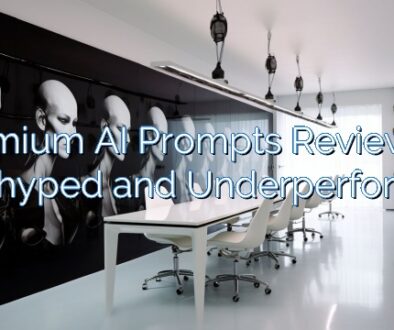Top 5 Ahrefs Techniques for Content Marketers: Boost Your SEO Game
Revolutionizing Content Strategy with AI: A Guide for SMBs
Creating a robust content strategy for your small or medium-sized business isn’t just about churning out blog posts and social media updates. It’s about deeply understanding your market, getting into the heads of your competitors, and leveraging technology, especially AI, to turbocharge your efforts. In this in-depth article, we’ll walk you through advanced techniques for taking your content strategy to the next level.
1. Decoding the Competition: How to Outsmart Your Rivals with Smart Analysis
Have you ever wondered why your competitors are outranking you, despite your best efforts? The key is to reverse-engineer their content strategy, but not just by skimming through their blogs. Today’s content landscape extends far beyond traditional blog posts—it encompasses web tools, app integrations, and interactive content.
To get a leg up, analyze their site structure using tools like Ahrefs’ Site Explorer. This allows you to see which sections of their website are drawing in the masses. Sometimes, you’ll be surprised to find that their most trafficked content isn’t articles but tools and applications that solve user problems directly.
By exploring competitor site structures and changes over time, you can gain insights into their strategic shifts and new focuses. This might lead you to pivot your content emphasis, or even inspire the creation of your own proprietary tools that drive traffic and engagement significantly more than your regular posts.
Strategic Shifts and Content Pruning
Did you notice a drastic traffic change on your competitors’ sites? Investigating what they’ve pruned or expanded upon can indicate what’s currently working in your industry. Perhaps they’ve shed low-performing blog pages and doubled down on developing interactive tools—this could signal a strategic direction that might benefit you as well.
2. Tracking and Improving Content ROI: Who Shines and What Works?
Understanding the performance of your content is critical. Which authors drive traffic? What types of content are most successful in attracting backlinks? Tools like Ahrefs make it easy to organize and analyze your content, categorizing by the author, content type, or topic, through Portfolios.
Establish portfolios to monitor different aspects such as:
- Freelancer vs. in-house content performance
- SEO-driven content vs. though-leadership pieces
- Impact of article updates or rewrites
From here, analyzing metrics can help you understand what to replicate or improve upon. Remember, content is an investment, and the end goal is to maximize your return on that investment, whether that’s through traffic, conversions, or authority in your niche.
Keeping an Eye on the Prize: Competitor Content Watch
Watching your rivals closely can be as crucial as focusing on your own content. Keeping tabs on the performance of key articles from your competitors through the same Portfolio feature can provide continuous intelligence that informs your content updates and ensures you’re not lagging.
3. AI-Powered Keyword Exploration: Sowing the Seeds of Success
Keyword research can feel like a daunting task, especially when it seems like you’ve hit a wall. AI is radically changing this process. With tools like Ahrefs, you can gain AI-generated suggestions for seed keywords, unveiling a treasure trove of ideas you may not have considered otherwise.
A tool like Ahrefs’ Site Explorer can show you technical terms, emerging trends, and even controversy-generating keywords that can spark engagement. It’s not enough to find high-volume keywords; uncovering those niches and unique angles will set your content apart.
Finding Golden Nuggets Amongst the Data
Once you have a plethora of seed keywords, assess them for search volume and difficulty to prioritize the most promising ones. But don’t just stop at surface-level metrics. Dive into matching terms and related terms reports to broaden your horizons and uncover less obvious, but potentially valuable, content opportunities.
4. From Chaos to Clarity: Transforming Keywords into Compelling Content
Turning a mountain of keyword data into cohesive content planning is no small feat. That’s where topic clustering comes in, a methodology supported by AI to better organize and plan your content. By understanding parent topics, you can target a cluster of keywords with a single, comprehensive piece of content, efficiently maximizing your SEO efforts.
For instance, rather than creating multiple articles for “content marketing tips”, “content marketing strategies”, and “content marketing examples”, you would write a well-rounded guide on “content marketing” that encompasses all these facets in one resource.
Efficiency and Relevance: Smart Content Curation
The beauty of clustering is how it streamlines your strategy. It allows you to focus on creating fewer, but more impactful pieces that cover a range of targeted keywords, making your content strategy not only more efficient but also more relevant to your audience’s searches.
5. Learning from Competitors’ Content Evolution: The Art of Adaptation
Staying on top means continuously adapting your content just as fast, if not faster, than your competitors. Analyzing how and when they update their content can give you actionable insights that you can apply to your revisions or upcoming articles.
Ahrefs’ Page Inspect feature can showcase a page’s historical changes, allowing you to pinpoint what your competitors added or altered to improve their search engine performance. Did they add a new section? Update certain phrases? You can learn from their tweaks and tests, and apply similar strategies to your content for a competitive edge.
Spotting Traffic Triggers: Decoding Competitors’ Success
Identifying what led to a sudden surge in traffic on a rival’s content can unlock strategies that resonate with your shared audience. Implementing these can be the difference between stagnating on page two of search results or climbing towards the coveted top spots.
Conclusion: A Content Marketing Renaissance
The advent of artificial intelligence in content marketing is like opening Pandora’s box – but in the best way possible. It arms us with tools and insights that were once the domain of guesswork or high-end market analysis firms. SMB owners and nonprofits alike can harness these tools to not only keep up but also lead the pack in their respective niches.
Remember, while tools like Ahrefs offer a trove of data and automation, the human touch in interpreting and applying these insights is irreplaceable. Combining AI insights with the creativity and strategic thinking of a skilled marketer is what makes the magic happen. If you’re wondering how these strategies can be tailored to your unique brand, I’d love to discuss how we can apply this to your business. Book a 15-minute call with me, Alex Casteleiro, at https://reach.alexcasteleiro.com, and let’s explore the potential together.
FAQs
How can AI tools help in content marketing?
AI tools can automate and enhance various aspects of content marketing, from keyword research to competitor analysis, and can even suggest content strategies based on data-driven insights.
Is it essential to keep track of competitor content updates?
Yes, understanding competitor content updates can provide insights into what’s working for them, which you can adapt and improve upon to stay competitive.
Can Ahrefs’ tools be used to improve existing content?
Absolutely. Ahrefs can help identify content gaps and opportunities for optimization, allowing you to update your content to better meet user intent and improve search rankings.
What is keyword clustering, and why is it important?
Keyword clustering groups similar keywords together so that you can target multiple search queries with a single, comprehensive piece of content, improving efficiency and relevance.
How frequently should I update my content strategy based on AI insights?
Your content strategy should be a living document, periodically reviewed and updated based on the latest AI insights, industry trends, and performance data.
[ad_2]
Inspiration Source link




